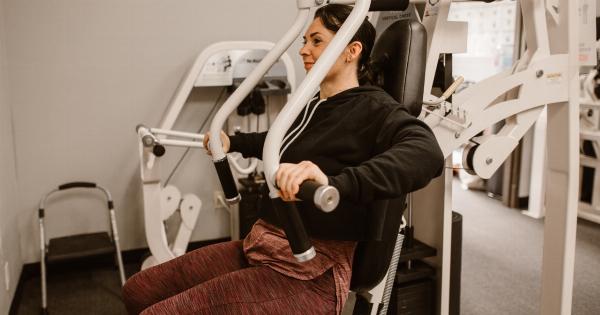For years, people have been striving to achieve the perfect body through various methods, one of which is plastic surgery.
Traditional methods of plastic surgery involve removing excess fat through liposuction and then reshaping the body through implants or other procedures. However, in recent years, plastic surgeons have started using a new game-changing technique that involves using a patient’s own fat to enhance different body parts, commonly referred to as fat transfer.
In this article, we will delve into the details of fat transfer and explore why it is becoming a popular game-changing strategy in plastic surgery.
What is fat transfer?
Fat transfer, also known as fat grafting or lipofilling, is a procedure where a plastic surgeon extracts fat from one part of the body and transfers it to another part of the body.
The fat is extracted through liposuction, a procedure where a small tube, called a cannula, is inserted into the skin and used to remove fat cells. The extracted fat is then processed and purified before being re-injected into the desired area of the body, typically the face, breasts, buttocks, or hands.
Why is fat transfer considered a game-changing strategy in plastic surgery?
Fat transfer is considered a game-changing strategy in plastic surgery for several reasons:.
- Natural results: Because the fat is extracted from the patient’s own body and re-injected into another part of their body, it results in a more natural-looking outcome compared to other plastic surgery options such as implants.
- Minimal downtime: Fat transfer is a minimally invasive procedure, which means that it requires little to no downtime compared to other plastic surgery procedures. Patients can typically return to their normal activities within a few days of the procedure.
- Cost-effective: Fat transfer is typically less expensive than other plastic surgery procedures because it involves using the patient’s own fat instead of using synthetic materials or implants.
- Permanent results: Unlike other injectables such as Botox or dermal fillers, the results of fat transfer are permanent. Once the fat grafts have settled and integrated into the recipient site, they will stay there indefinitely.
Who is a good candidate for fat transfer?
Fat transfer can be a suitable option for individuals who are looking to enhance their appearance and want a more natural-looking outcome.
Good candidates for fat transfer typically have excess fat in certain areas of their body that can be extracted and transferred to another part of their body that they want to enhance. It’s important to note that candidates should be in good health, have sufficient fat deposits, and have realistic expectations for the outcome of the procedure.
What are the different areas of the body that can benefit from fat transfer?
There are several areas of the body that can benefit from fat transfer, including:.
- The face: Fat transfer to the face can help reduce wrinkles, plump up the lips, and restore volume to hollow areas such as the under-eye area and the cheeks.
- The breasts: Fat transfer to the breasts can help increase the volume and size of the breasts without the need for implants, resulting in a more natural-looking outcome.
- The buttocks: Fat transfer to the buttocks, commonly referred to as a Brazilian butt lift, can help enhance the size and shape of the buttocks, resulting in a more curvaceous figure.
- The hands: Fat transfer to the hands can help reduce the appearance of wrinkles and veins, resulting in a more youthful-looking appearance.
What is the procedure for fat transfer?
The procedure for fat transfer typically involves the following steps:.
- Anesthesia: The procedure begins with the administration of local anesthesia or general anesthesia, depending on the extent of the procedure and the patient’s preference.
- Liposuction: The surgeon will use liposuction to remove fat from the donor site, typically the abdomen, thighs, or buttocks.
- Purification: The extracted fat will be processed and purified to remove any impurities and ensure that only viable fat cells are used for the transfer.
- Injection: The surgeon will then use a cannula to inject the purified fat cells into the recipient site, typically using a technique that involves creating small incisions and injecting the fat in small amounts to ensure an even distribution.
- Recovery: After the procedure, patients may experience some swelling, bruising, and discomfort, but this typically subsides within a few days. Patients can typically return to their normal activities within a week or two of the procedure.
What are the potential risks and complications of fat transfer?
Like any surgical procedure, fat transfer comes with potential risks and complications, including:.
- Infection: There is a risk of infection with any surgical procedure. Patients will typically be prescribed antibiotics after the procedure to reduce the risk of infection.
- Reabsorption: In some cases, the transferred fat may be reabsorbed by the body, resulting in a loss of volume in the recipient site.
- Asymmetry: There is a risk of asymmetry or unevenness in the final result.
- Necrosis: In rare cases, the transferred fat may not have enough blood supply and may die, resulting in necrosis or tissue death.
Conclusion: Is fat transfer the right game-changing strategy for you?
Fat transfer is a game-changing strategy in plastic surgery that offers patients a natural-looking outcome, minimal downtime, and permanent results.
While it comes with potential risks and complications, the benefits of fat transfer make it a popular option for individuals who are looking to enhance their appearance in a more natural way. However, it’s important to consult with a qualified and experienced plastic surgeon to determine if fat transfer is the right option for your specific needs and goals.






























